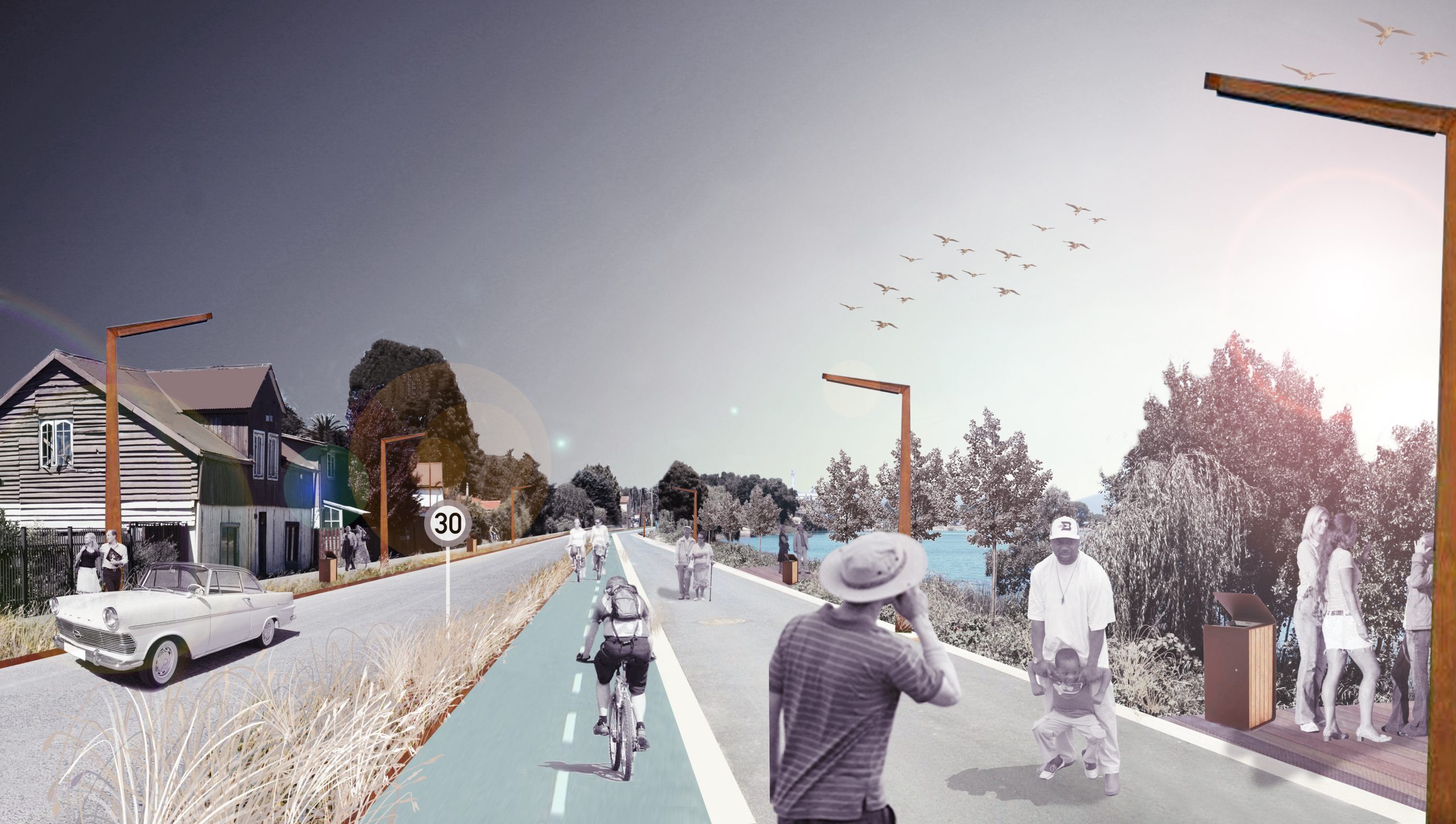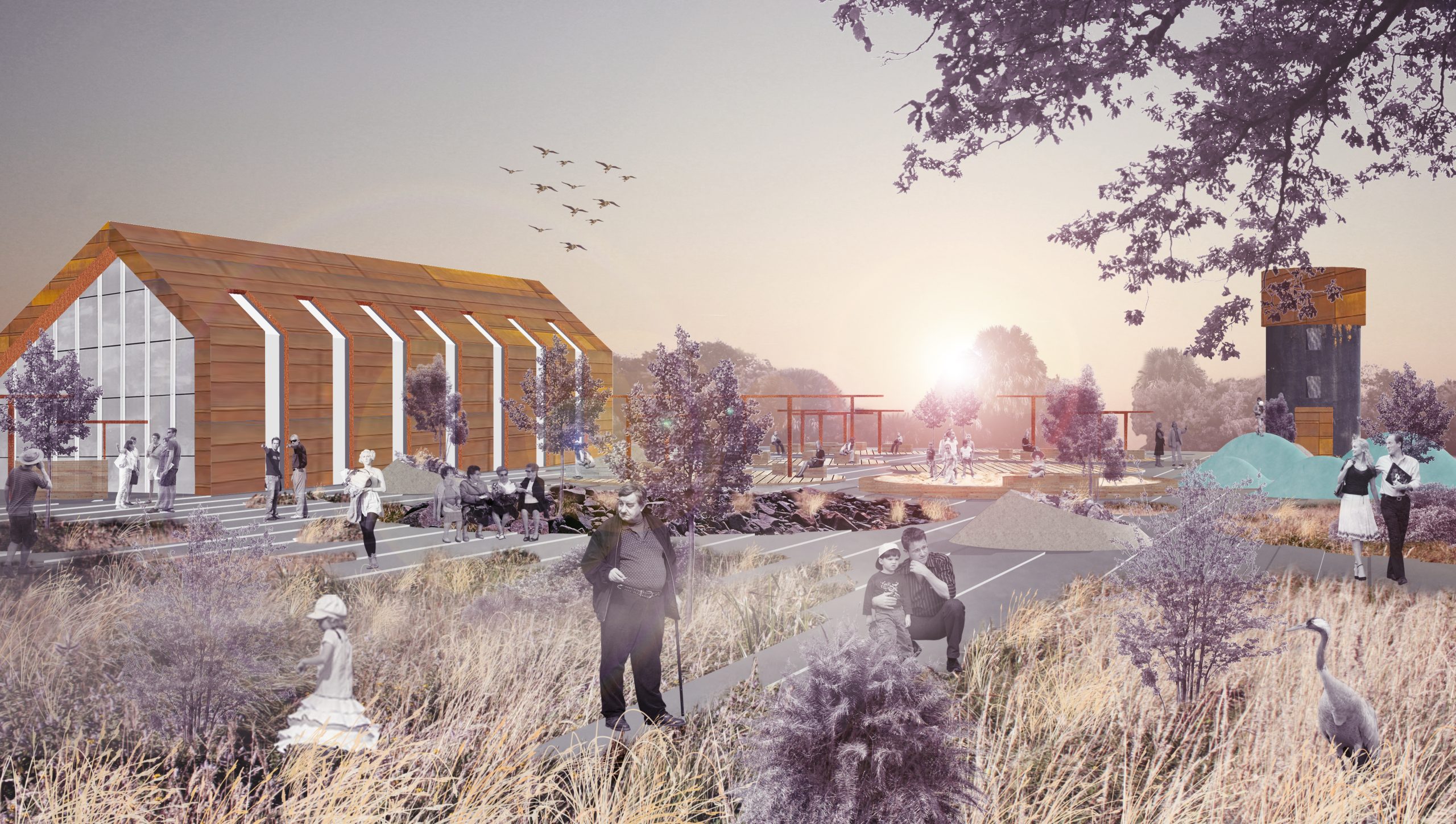Urban Design lab -Valdivia, Chile
Conceptual Design for the Improvement of Barrio Collico, Valdivia, Chile
Year
2013-2018
Status
completed
Location
Valdivia, Chila
Collaboration
TU Wien
Authors
Dominique Mashini, Roland Krebs, Sebastian Sattlegger, Tamara Egger
Upon our first visit to Collico in Valdivia, we encountered a unique urban landscape shaped by its industrial history. Despite being part of Valdivia, Collico maintains an independent identity, urban typology, and social structure. Established in the mid-nineteenth century by German migrants as an industrial quarter strategically located near the Calle River and the now-abandoned railway station, Collico has faced natural disasters, notably the 1960 earthquake that caused significant damage and halted industrial production. The neighborhood remains poorly connected to the rest of the city, retaining a village-like social dynamic. Along the Calle River, the presence of gated communities highlights a disconnect from the traditional neighborhood.
Emerging topics from workshops include the consolidation of the waterfront and abandoned railway track as centralities, with an emphasis on utilizing them as pedestrian and recreational areas. Participants also stressed the importance of acknowledging and protecting the post-industrial cultural heritage, particularly the significant role played by German settlers in establishing the city’s industrial heritage, evident in heritage buildings like the large flour mill. Stakeholders identified potential in vacant industrial spaces, such as a silo, proposing urban interventions for impactful development.
Concerns about land use and gated communities were raised, emphasizing the need to involve traditional neighborhoods in Valdivia’s urban growth trends to regulate real estate development while preserving the human scale and social cohesion. The overarching goal of the strategy is to strengthen social capital as a driver for urban development. Specific objectives include capitalizing on historic-patrimonial values, emphasizing landscape elements related to the river, streams, and wetlands, and providing public spaces for social interaction. The urban strategy proposes consolidating two linear centralities, promoting a human-scale neighborhood, and recovering tangible and intangible heritage. It seeks to reconcile traditional and emerging urban dynamics through five projects defined in participatory workshops with the local community.
DE
Bei unserem ersten Besuch in Collico in Valdivia stießen wir auf eine einzigartige städtische Landschaft, geprägt von ihrer industriellen Vergangenheit. Trotz der Zugehörigkeit zu Valdivia behält Collico eine unabhängige Identität, städtebauliche Struktur und soziale Ordnung bei. Gegründet im mittleren 19. Jahrhundert von deutschen Migranten als Industrieviertel, strategisch in der Nähe des Flusses Calle und des mittlerweile verlassenen Bahnhofs gelegen, sah sich Collico Naturkatastrophen gegenüber, insbesondere dem Erdbeben von 1960, das erhebliche Schäden verursachte und die industrielle Produktion stoppte. Das Viertel bleibt schlecht an den Rest der Stadt angebunden und bewahrt soziale Dynamiken eines Dorfes. Entlang des Flusses Calle verdeutlicht die Präsenz von abgeschotteten Gemeinden eine Trennung vom traditionellen Viertel.
Aufkommende Themen aus Workshops umfassen die Konsolidierung der Uferpromenade und der verlassenen Bahnstrecke als Zentralpunkte, wobei betont wird, sie als Fußgänger- und Erholungsbereiche zu nutzen. Die Teilnehmer unterstrichen auch die Bedeutung der Anerkennung und des Schutzes des postindustriellen Kulturerbes, insbesondere der bedeutenden Rolle der deutschen Siedler bei der Gründung des industriellen Erbes der Stadt, wie es in den Kulturgebäuden wie der großen Mühle deutlich wird. Interessenträges identifiziertes Potenzial in leerstehenden industriellen Räumen wie einem Silo und schlugen städtebauliche Eingriffe für wirkungsvolle Entwicklung vor.
Sorgen um die Bodennutzung und abgeschottete Gemeinden wurden geäußert, wobei betont wurde, die traditionellen Viertel in die städtebaulichen Wachstumstrends von Valdivia einzubeziehen, um die Immobilienentwicklung zu regulieren und gleichzeitig den menschlichen Maßstab und die soziale Kohäsion zu bewahren. Das übergeordnete Ziel der Strategie ist es, das soziale Kapital als Treiber für städtische Entwicklung zu stärken. Konkrete Ziele sind die Kapitalisierung von historisch-patrimonialen Werten, die Betonung von Landschaftselementen im Zusammenhang mit Flüssen, Bächen und Feuchtgebieten sowie die Bereitstellung öffentlicher Räume als Orte sozialer Interaktion.
Die städtebauliche Strategie schlägt die Konsolidierung von zwei linearen Zentralpunkten vor, fördert ein stadtverträgliches Viertel und die Wiederherstellung von greifbarem und immateriellem Erbe. Sie zielt darauf ab, traditionelle und aufkommende städtische Dynamiken durch fünf in partizipativen Workshops mit der lokalen Gemeinschaft definierte Projekte in Einklang zu bringen.





